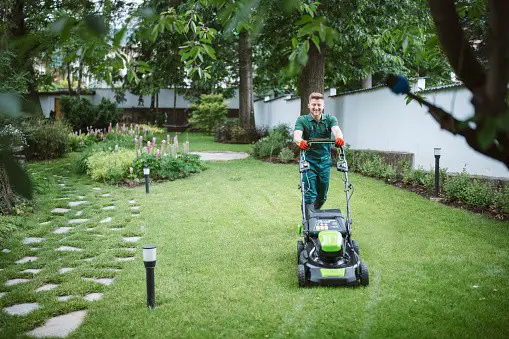DIY lawn care plan that is easy to maintain, Property garden care grass type, Home gardening maintenance
DIY Lawn Care Plan That’s Easy to Maintain
24 Sep 2022
The best way to have a great looking lawn is to create a DIY lawn care plan. This plan will be easy to maintain, and you will be able to keep your lawn healthy and looking great all year round. In this article, we will provide you with everything you need to know in order to create your own DIY lawn care plan. So let’s get started!
Choose the right grass for your climate and soil
The right sandy lawn care plan starts with knowing the type of grass and climate you lawn resides in https://holmesutah.com/sandy/. There are a number of different types of grasses that can be used in a lawn, and each one has its own advantages and disadvantages. In order to choose the right grass for your climate and soil, you will need to do some research. Some of the most popular types of grasses include:
– Bermuda Grass: This type of grass is very drought tolerant and can handle a lot of wear and tear. It also grows very quickly, making it a good choice for homeowners who want a quick turnaround. However, Bermuda Grass does not fare well in cold climates, so it is not suitable for use in northern states.
– Zoysia Grass: Zoysia is another type of grass that is very drought tolerant. It also has a deep root system, which makes it resistant to pests and diseases. However, Zoysia is slow to grow, so it may not be the best choice for homeowners who are short on time.
– Kentucky Bluegrass: Kentucky Bluegrass is a popular choice for homeowners in cold climates. It is very frost tolerant, and can withstand heavy rains and snowfall. However, Kentucky Bluegrass requires a lot of maintenance, and can be susceptible to pests and diseases.
– St. Augustine Grass: St. Augustine Grass is a good choice for homeowners in warm climates. It is drought tolerant and can tolerate high levels of traffic. However, St. Augustine Grass does not do well in shade, so it may not be the best choice for homes with lots of trees.
When choosing the right grass for your climate and soil, it is important to consider the amount of maintenance that each type requires. Be sure to choose a grass that is suitable for your lifestyle and your climate zone. If you’re interested an instant lawn options, check out Lilydale Instant Lawn.
Mow your lawn at the right height
Mowing your lawn at the right height is an important part of lawn care. If you mow your lawn too short, you can damage the grass and make it susceptible to pests and diseases. If you mow your lawn too high, you can strain the grass and cause it to turn yellow. In order to find the right height for your lawn, you will need to do some research.
Most experts recommend mowing your lawn at a height of 2-3 inches. This will ensure that the grass is healthy and strong, and it will also help to prevent weeds from growing. Be sure to adjust the height of your mower accordingly, and always use sharp blades to avoid damaging the grass.Water your lawn regularly
Fertilise your lawn regularly
Fertilising your lawn is another important part of lawn care. Fertiliser helps to promote growth and strengthens the grass against pests and diseases. In order to maintain a healthy lawn, you should fertilise it twice a year – once in spring and once in fall.
There are a number of different types of fertiliser available on the market, so be sure to choose one that is suited for your climate and soil type. Follow the instructions on the label carefully, and don’t over-fertilize your lawn or you could damage it.Aerate your soil every year
Water your lawn deeply and infrequently
One of the most important things you can do for your lawn is to water it regularly. Lawns require 1-2 inches of water per week in order to stay healthy. If you live in a hot climate, you may need to water your lawn more often than that. You can water your lawn manually with a garden hose, or you can use a sprinkler system.
Be sure to water your lawn during the early morning or evening hours, when the sun is not as strong. This will help to prevent the grass from drying out quickly. And always make sure that the soil is wet before watering your lawn; otherwise, you will be wasting water.Fertilize your lawn twice a year
Aerate your lawn every few years
Aerating your soil is another important step in keeping your lawn healthy. Aerating helps to loosen up the soil and allows air and water to penetrate deep into the ground. This helps to improve drainage and prevents pests and diseases from developing.
You can aerate your soil manually with a garden fork, or you can use an aerating machine. Be sure to aerate your soil at least once a year for best results.
Remove debris from your lawn regularly
Removing debris from your lawn is an important part of lawn care. Debris can clog up the soil and prevent the grass from growing properly. It can also attract pests and diseases.
In order to keep your lawn healthy, you should remove debris from it regularly. This includes leaves, branches, twigs, and other types of trash. Be sure to remove debris from all areas of your lawn, including the sides and the back. You can use a rake or a broom to remove debris, or you can use a leaf blower.
Control pests and diseases with organic methods
Organic methods are a safe and environmentally friendly way to control pests and diseases in your lawn. There are a number of different organic methods available, so be sure to choose the one that is best suited for your needs.
https://www.facebook.com/HolmesUtah
One of the most common organic methods is using insecticidal soap. Insecticidal soap is a natural product that kills insects on contact. It is non-toxic and safe for use around pets and children.
Another common organic method is using garlic. Garlic contains a compound called allicin, which is known to kill pests and diseases. You can use garlic in several ways: you can sprinkle it on the soil, you can make a garlic spray, or you can plant garlic bulbs in your lawn.
Finally, you can also use organic methods such as traps and barriers to control pests and diseases. There are a variety of different traps and barriers available, so be sure to choose one that is best suited for your needs.
Enjoy your beautiful, healthy lawn!
Taking care of your lawn can be a lot of work, but it’s definitely worth it in the end. By following these simple tips, you can keep your lawn healthy and looking its best. So go ahead and get started – your neighbours will be jealous of your beautiful lawn! If you have any questions, contact your local lawn and pest specialist to build the perfect DIY lawn care plan.
Comments on this guide to DIY lawn care plan that is easy to maintain article are welcome.
Property Lawn Care
Lawns Posts
Taking care of a lawn with weeds guide
Tools You Need to Maintain a Beautiful Lawn
How to Properly Take Care of Your Lawn
Avoid typical mistakes in lawn care
Building Articles
Contemporary Property Articles – architectural selection below:
Comments / photos for the DIY lawn care plan that is easy to maintain advice page welcome







